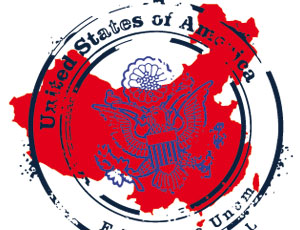Letters from America: Vietnam as a Manufacturing Destination for U.S. Companies
Manufacturers in China are adding manufacturing capacity in Hanoi and Ho Chi Minh City for export back to China and beyond
This is Part X of our ongoing Letters from America to Asia Series, featuring opinions and observations on America’s trade relations with China and emerging Asia from Chris Devonshire-Ellis.
 Dec. 3 – Over the past few months as I’ve been speaking at events across the United States, many questions have been raised about all sorts of subjects – from the differences in tax rates and legal structures within individual countries, such as China or India, to the primary differences between entire countries. Concerning the latter, the country-to-country comparison that gets raised most often is between China and Vietnam.
Dec. 3 – Over the past few months as I’ve been speaking at events across the United States, many questions have been raised about all sorts of subjects – from the differences in tax rates and legal structures within individual countries, such as China or India, to the primary differences between entire countries. Concerning the latter, the country-to-country comparison that gets raised most often is between China and Vietnam.
It’s a timely comparison to examine, not least because Vietnam is one of Asia’s “Tiger Economies” and due to the fact that, although it has suffered over the past three years like everyone else in the wake of the Global Financial Crisis, the country has proven remarkably resilient. Vietnam as an investment play, though, is inherently linked to two distinct entities. One is China – its massive neighbor to the north, with which it shares an 840-mile border that was fought over briefly during the Sino-Vietnamese War in 1979. The other is ASEAN – the 10-member Southeast Asian trade bloc that has introduced the free trade of most goods among member nations, and is set to expand that in 2015 to include agreements with China and India. That has huge ramifications for the region, and will likely mean that ASEAN, with Vietnam as a core member, will become China’s largest trade partner that same year, with total trade worth some US$500 billion. To contrast the enormity of this figure, the entire United States sold just one-fifth of that in exports to China last year.
Vietnam’s relationship with China is both economic and political. Although that may seem obvious, it is the manner in which these play out that will provide clues as to the true nature of the stresses and opportunities within the trade gap. Despite both countries being officially communist regimes, Vietnam has offered a cool hand to China, wary of getting too close due to the 1979 war and ongoing territorial disputes still fresh in many people’s minds.
While other Asian nations – including nearby Myanmar and Cambodia – have fully embraced China in the past in terms of economic assistance, Vietnam has remained aloof – and continues to do so. That’s not to say bilateral trade between Vietnam and China isn’t booming – because it is, reaching US$35.7 billion last year. Yet Vietnam remains politically cautious towards China. Ongoing territorial disputes between the two in the South China Sea certainly aren’t helping the situation, and Vietnam has recently refused to endorse the new Chinese passports which depict the entirety of the contested territory as Chinese. This lack of trust over longer-term Chinese intentions has steered Vietnam to look in multiple directions – north and east towards China, but also to the south and west towards Asia. It is worth noting that Vietnam’s trade with fellow ASEAN member countries is currently some US$27 billion; while the country has been active in using ASEAN free trade agreements with other countries such as India, Japan and Australia to widen its economic base and lessen dependence upon trade with China – in contrast to countries such as Cambodia.
Of the ASEAN members, Singapore, Thailand and Malaysia are Vietnam’s largest partners, while outside of the group trade is also growing significantly with India and Japan. The reason behind Vietnam spreading its trade wings further afield is at least partly due to the belief that China has not always proven particularly sensitive to other nations within the region. Vietnam has past experience of being treated as a de facto vassal state, and until recently even Myanmar was subjected to this through China’s support of their military regime for many years. Yet even the hard-line Burmese generals began to feel enough was enough and have subsequently adopted America as a mentor.
Additionally, Vietnam, while communist, is still largely Buddhist in its beliefs, and quietly, the Dalai Lama is a respected figure among many Vietnamese. The typical Chinese rhetoric towards the Buddhist leader makes many Vietnamese uncomfortable. Meanwhile, while Cambodia is still close to China, it too is being wooed by President Obama – who visited shortly after his reelection. Such American moves fit in with Vietnam’s China policy – trade is healthy, but Vietnam remains cautious in terms of the political ramifications of an over reliance on China’s economy. It’s a fact of political life with a powerful neighbor well-observed in Hanoi.
Vietnam’s policy of enlarging its multilateral trade space is also about to pay dividends. With the 2015 ASEAN free trade agreements with China, India, Japan, South Korea and Australiasia coming into effect, the country is poised to offer a manufacturing base for many companies wishing to sell to the entire region. It is this point that is key to understanding the opportunities that Vietnam now offers.
Wage increases in China are a matter of national policy, and although this is creating a much-needed and fast-growing consumer market, it is also having the effect of raising salary levels at an average rate of some 22 percent per year. While prices in Vietnam have also risen – and its economy is not immune to inflationary shocks – Vietnamese wages are about one-third of those seen in South China.
This means that Vietnam is developing as an export-driven manufacturing base – just as China was in the late 1990s to mid-2000s. The free trade agreements coming into force mean that Vietnamese-made products (or those from anywhere else in ASEAN) will, for the most part, be able to be sold to the China market at zero tariffs. Add to that an array of free trade and bonded zones (just like China used to have) that minimize taxes on products assembled and then exported, plus commitments – already underway – to improve the nation’s ports (especially those at Haiphong and HCMC), the tax and operational infrastructure to push Vietnam forward as a credible manufacturing destination for China consumption is already taking place.
This trend has been duly noted, not least by American companies already extant in Vietnam. As Christopher Towmey, current Chairman of the American Chamber of Commerce in Hanoi has recently mentioned in the Chamber’s annual Vietnam Business Forum address:
“AmCham cooperation with and support of Vietnam’s government and business has led to a substantial increase in bilateral trade over the last twelve years: from only $1.5 billion in 2001 when the BTA went into effect (December 2001); to $9.7 billion in 2006 when Vietnam achieved WTO Accession and Permanent Normal Trade Relations with the U.S. (December 2006); to more than $22 billion in 2011. Based on trade data for the first nine months of 2012, we expect that Vietnam-U.S. bilateral trade will be $24.5 billion this year, and will reach nearly $50 billion by 2020, if present trends continue.”
The message is simple – while China evolves to a consumer economy, the choice of locations to service that from the manufacturing perspective do not necessarily have to be based in China. Vietnam offers one option well-worth consideration.
Chris Devonshire-Ellis is the principal and founding partner of Dezan Shira & Associates. The firm provides foreign direct investment legal, tax and comparative advice between China, India, Vietnam and Emerging Asia and maintains 17 offices throughout the region. The practice also maintains a liaison office in Charlotte, North Carolina, and is a U.S. Department of Commerce preferred service supplier to American businesses in Asia. To contact the firm, please email asia@dezshira.com or visit the practice website at www.dezshira.com.
Related Reading
![]() Vietnam Briefing
Vietnam Briefing
Our magazine and regular news service about doing business in Vietnam. We cover topics relating to the Vietnam economy, the market in Vietnam, foreign direct investment and Vietnam law and tax.
 The Asia Tax Comparator
The Asia Tax Comparator
In this issue, we discuss corporate income tax, value-added tax, business tax, goods and service tax, withholding tax, and individual income tax as these apply in China, India, and Vietnam, and in the popular holding company destinations of Hong Kong and Singapore. This includes tax rates, descriptions, incentives, and deadlines, as well as main FDI source countries/regions and industry-specific notes.
 An Introduction to Doing Business in Vietnam
An Introduction to Doing Business in Vietnam
Asia Briefing, in cooperation with its parent firm Dezan Shira & Associates, has just released this 32-page report introducing everything that a foreign investor should be familiar with when establishing and operating a business in Vietnam.
 Moving from China to India, Vietnam and Emerging Asia
Moving from China to India, Vietnam and Emerging Asia
Our popular report on operational costs, comparisons, including land, labor and welfare obligations, applicable tax rates and a comparison of legal structures across emerging Asia.
Selling to China’s Middle Class – It’s a Vietnamese Investment Play
Emerging Asia Minimum Wages and Labor Laws
- Previous Article China’s SAFE Releases Circular on Foreign-Invested Partnership Enterprises
- Next Article China Releases Announcement on Export Quotas of Rare Earth



























